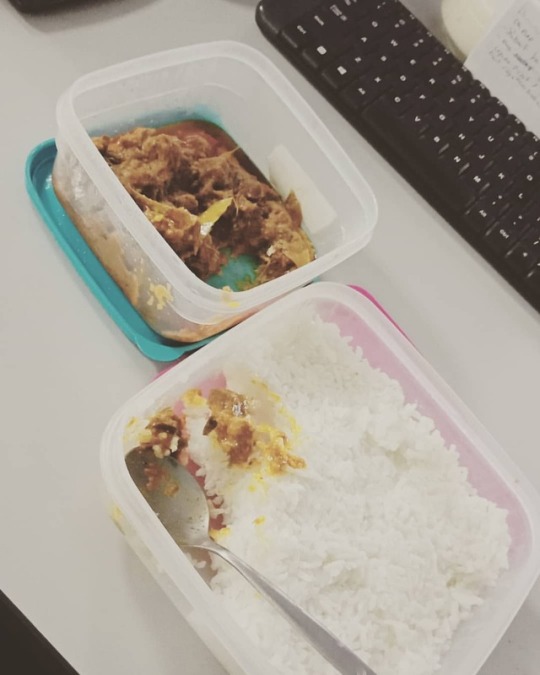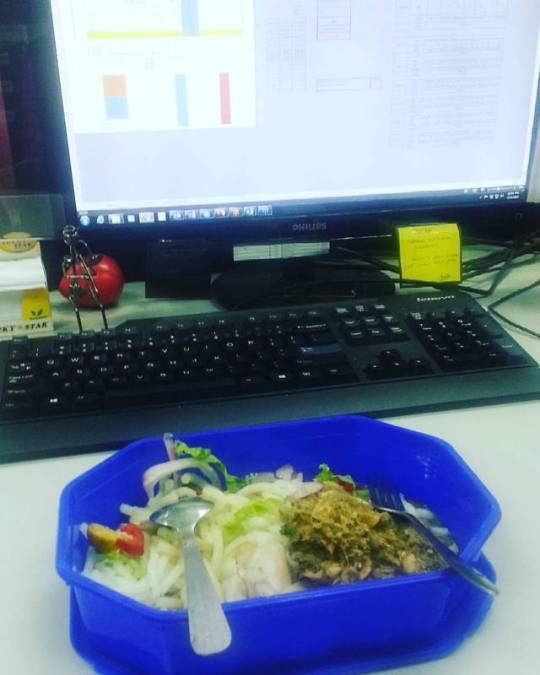#hiru gohan
Text
to taste:
味わう(あじわう)
味見する(あじみする)
味がする(あじがする)
食べる(たべる)
飲む(のむ)
経験する(けいけんする)
food vocabulary
1. 食べ物 たべもの tabe mono Food
2. 日本料理 にほんりょうり nihon ryouri Japanese Cooking / Japanese Dish / Japanese Food
3. 朝食 ちょうしょく chou shoku Breakfast
4. 朝御飯 あさごはん asa gohan Breakfast
5. 昼食 ちゅうしょく chuu shoku Lunch
6. 昼御飯 ひるごはん hiru gohan Lunch
7. 夕食 ゆうしょく yuu shoku Dinner
8. 晩御飯 ばんごはん ban gohan Dinner
9. 夜食 やしょく ya shoku Supper
10. おかず okazu Side Dish
11. お八つ おやつ oyatsu Snack / Refreshment
12. 弁当 べんとう bentou Box Lunch
13. 駅弁 えきべん ekiben Train Station Box Lunch
14. 御飯 ごはん gohan Meal / Cooked Rice
15. 刺身 さしみ sashimi Sliced Raw Fish
16. 寿司 / 鮨 / 鮓 すし sushi Sushi
17. 天婦羅 てんぷら tenpura Tempura / Deep-fried Fish and Vegetables
18. 牛丼 ぎゅうどん gyuu don Rice topped with Beef and Vegetables
19. 親子丼 おやこどん oyako don Rice topped with Boiled Chicken and Eggs
20. 天丼 てんどん ten don Rice topped with Deep-fried Prawns & Fishes
21. 鰻丼 うなぎどん unagi don Rice topped with Glaze-grilled Eel
22. 鰻 うなぎ unagi Eel
23. 豚カツ とんカツ tonkatsu Pork Cutlet
24. カレーライス kare- raisu Curry and Rice
25. 鋤焼き すきやき suki yaki Thin Slices of Beef cooked with various Vegetables in a Heavy Iron Pan
26. お好み焼き おこのみやき okonomi yaki Thin and Flat Pancake cooked on a Hot Plate with bits of Meat, Seafood and Chopped Cabbages
27. 鉄板焼き てっぱんやき teppan yaki Grilled Meat cooked on Iron Plate
28. 焼き鳥 やきとり yaki tori Grilled Chicken / Broiled Chicken
29. 蛸焼き たこやき tako yaki Octopus Dumpling
30. 焼きそば やきそば yaki soba Pan Fried Noodle
31. 餃子 ギョウザ gyouza Dumpling stuffed with Minced Pork and Vegetables
32. 茶碗蒸し ちゃわんむし chawan mushi Steamed Egg Custard in Tea Cup
33. しゃぶしゃぶ shabu shabu Japanese Style Hotpot
34. 味噌 みそ miso Miso / Bean Paste
35. 味噌汁 みそしる miso shiru Miso Soup
36. ラーメン ra-men Ramen
37. うどん udon Noodle made of Wheat Flour
38. 蕎麦 そば soba Buckwheat Noodle
39. 餅 もち mochi Sticky Rice Cake
40. 餡パン あんパン anpan Japanese Bun filled with Red Bean Paste
41. 牛肉 ぎゅうにく gyuuniku Beef
42. 豚肉 ぶたにく butaniku Pork
43. 鶏肉 とりにく toriniku Chicken Meat
44. 羊肉 ようにく youniku Mutton / Lamb
45. 魚 さかな sakana Fish
46. 海老 / 蝦 えび ebi Prawn / Shrimp
47. 蟹 かに kani Crab
48. 豆腐 とうふ toufu Tofu / Bean Curd
49. 卵 たまご tamago Egg
50. 食パン しょくパン shoku pan Plain Bread / White Bread
51. 玉葱 たまねぎ tamanegi Onion
52. 胡瓜 きゅうり kyuuri Cucumber
53. 醤油 しょうゆ shouyu Soy Sauce
54. 酢 す su Vinegar
55. 山葵 わさび wasabi Japanese Horseradish
56. 油 あぶら abura Oil
57. 砂糖 さとう satou Sugar
58. 塩 しお shio Salt
59. 胡椒 こしょう koshou Pepper
60. 調味料 ちょうみ
りょう choumi ryou Seasoning / Condiment / Flavoring / Spices
Japanese English
1. yasai Vegetables
2. daikon raddish
3. nasu egg plant
4. nin jin carrots
5. bareisho(jagaimo) potato
6. satsuma-imo sweet potato
7. negi onion
8. tama-negi onion bulb
9. nin-niku garlic
10. kyuuri cucumber
11. kyabetsu cabbage
12. kabocha pumpkin
13. tomato tomato
14. kinoko mushroom
15. toomorokoshi corn
16. sato-imo taro
17. mame beans
18. daizu soy beans
19. shooga ginger
20. takenoko bamboo shoot
21. niga-uri bitter guard
22. horensoo spinach
23. seri parsley
24. hakusai chinese cabbage
アスパラ asparagus
おくら okra
かぼちゃ pumpkin
きゅうり cucumber
ゴーヤ bitter gourd
ごぼう burdock
さつまいも sweet potato
しいたけ shiitake mushroom
じゃがいも potato
ズッキーニ zucchini
だいこん Japanese radish
たまねぎ onion
ちんげんさい bok choy
トマト tomato
なす eggplant
にんじん carrot
ネギ leek
にんにく garlic
ピーマン green pepper
ブロッコリー broccoli
まいたけ hen-of-the-wood
モロヘイヤ Egyptian spinach
ルッコラ arugula
れんこん lotus root
2 notes
·
View notes
Text
JLPT N4 Grammar ~て帰る
JLPT N4 Grammar ~て帰る
テ形+帰る
Meaning: Back, take back…
1,今日はスーパーで買い物をして帰ろうと思っています。
Kyo- wa su-pa- de kaimono wo shite kaero- to omotte imasu.
I am going to do some shopping at the supermarket today and then go home.
2,今日は食べて帰るから、晩御飯はいらないよ。
Kyo- wa tabete kaeru kara, hiru gohan wa iranai yo.
I’m going to eat and go home today, so I don’t need dinner.
3,犬を散歩に連れて帰った。
Inu wo sanpo ni tsurete kaetta.
I took the…
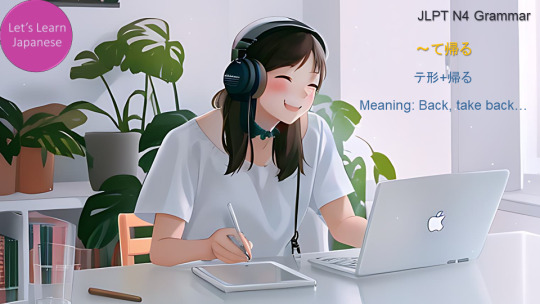
View On WordPress
0 notes
Photo
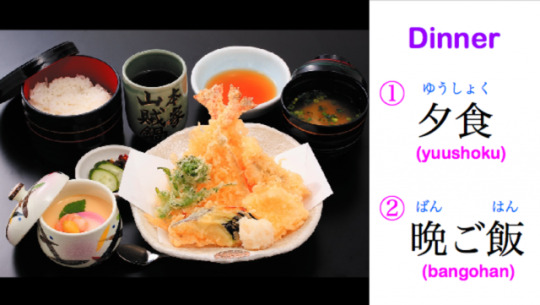
★ ご飯 (gohan) means “rice” but it is also used like “dinner” or “meal”.
★ 飯 (meshi) is a more casual way of saying ご飯 (gohan). It is used more often by males and can be considered somewhat vulgar.
★ 食事 (shokuji) = a meal
Learn more vocabulary from here \(◕ω◕)/♪ http://www.punipunijapan.com/meals-in-japanese/
#Japan#Japanese#online japanese lesson#japanese lesson#kakehashi#kakehashijapan#kakehashi japan#nihongo#nihon#gohan#bangohan#ban gohan#hirugohan#hiru gohan#asa gohan#asagohan#tempura#teriyaki#misoshiru#learn japanese#japanese culture#japan culture
41 notes
·
View notes
Note
16, 17, 19 for jigen :)
16. A childhood headcanon:
None, Jigen was born at age 32 in a wet cardboard box
His father smoked and he regularly stole his pack to take to school and make the other kids think he was cool, it probably didn't work and he also probably got his ass scolded to hell by the teachers. Can imagine he spent a lot of time in detention haha
17. What do you think their first word was: I HC him as mixed race so either something like hiru-gohan (lunch) or rabbit in english. Or maybe just 'mom'.
19. The most random ship you've seen with them: Uhh I think I saw Jigen/Pycal in the tag earlier so let's go with that. Not too many ships this series that are that 'out there' but I think that was certainly a first.
4 notes
·
View notes
Text
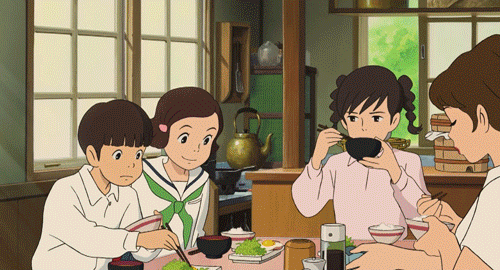
Let's Eat Vocabulary
食べる 「たべる」 taberu : to eat
▪ to live on (e.g. a salary); to live off; to subsist on
食す 「しょくす」 shokusu : to eat
ご飯 「ごはん」 gohan : cooked rice
▪ meal
ご飯時 「ごはんどき」 gohandoki : mealtime
ご飯粒 「ごはんつぶ」 gohantsubu : grain of boiled rice
ご飯蒸し 「ごはんむし」 gohanmushi : a rice steamer
夕食 「ゆうしょく」 yuushoku : evening meal; dinner
晩餐 「ばんさん」 bansun : dinner
午餐 「ごさん」 gosun : lunch; dinner
夕餉 「ゆうげ」 yuuge : evening meal; supper; dinner
膳部 「ぜんぶ」 zenbu : food (on a table) (esp. a small Japanese table); dinner; cover (in a restaurant)
▪ cook; chef; person who prepares food
朝飯 「あさめし」 asumeshi : breakfast
朝食後 「ちょうしょくご」 choushokugo : after breakfast
昼 「ひる」 hiru : noon; midday
▪ daytime
▪ lunch
昼飯 「ひるめし」 hirumeshi : lunch; midday meal
昼餉 「ひるげ」 hiruge : lunch; midday meal
▪ food served at a tea party (tea ceremony)
#japanese langblr#langblr#vocabulary#japanese vocabulary#nihongo#japanese vocabulary lists#japanese vocab list
175 notes
·
View notes
Text
GYARI - Aoi-chan Totally Loves Chocomint (Shiyoneko English Translation)
youtube
【 JP and Romaji 】
絶対にチョコミントを食べるアオイチャン 【歌詞】
Zettai ni Chokominto wo Taberu Aoi-chan (Kashi)
あお= 琴葉 葵
Ao = Aoi
あか= 琴葉 茜
Aka = Akane
あお:お姉ちゃん、お菓子買ってきたよ~
Ao: Oneechan, okashi katte kita yo~
あか: や↑ ったぜ
Aka: Ya ↑ ttaze
あお:一緒に食べよ~
Ao: Issho ni tabeyo~
あか:なに買ってきたん?
Aka: Nani katte kitan?
チョコミント アイス!
Chokominto Aisu!
あか:他には?
Aka: Hokani wa?
チョコミント アイス!
Chokominto Aisu!
あか:他には?
Aka: Hokani wa?
チョコミント アイス!
Chokominto Aisu!
あか:他には?
Aka: Hokani wa?
チョコミント アイス あと チョコミント アイス!
Chokominto Aisu ato Chokominto Aisu!
あか:あおいー?
Aka: Aoi-?
チョコミント アイス!
Chokominto Aisu!
朝ごはんチョコミント
Asa gohan chokominto
昼ごはんのデザートも
Hiru gohan no dezaato mo
晩ごはんにも加えて
Ban gohan no mo kuwaete
毎日食べて幸せ
Mainichi tabete shiawase
美味しいのに不思議だねえ
Oishii no ni fushigi da nee
どうして食べないのかな?
Doushite tabenai no ka na?
溢れるこの可愛さを
Afureru kono kawaisa wo
私が教えてあげる
Watashi ga oshiete ageru
蒼く爽やかな香りで
Aoku sawayakana kaori de
幸せに導く 神のお菓子 故に
Shiawase ni michibiku Kami no okashii
故に
Yue ni
最 of the 高
Sai of the kai
私だけが理解る幸福な世界
Watashi dake ga wakaru koufuku na sekai
あ そうだ
A sou da
チョコミント布教するため
Chokominto fukyou suru tame
政党結成しよっかな~
seitou kessei shiyokka na~
あか:あ、あおいー?
Aka: A, Aoi-?
チョコミント アイス アイス アイス
Chokominto aisu aisu aisu
yes つめたくて
yes tsumetakute
チョコミント アイス アイス アイス
Chokominto aisu aisu aisu
yes おいしいよ
yes oishii yo
チョコミント アイス アイス アイス
Chokominto aisu aisu aisu
yes 愛と夢を詰めて
yes ai to yume wo tsumete
振る舞ってあげる
furumatte ageru
チョコミント アイス アイス アイス
Chokominto aisu aisu aisu
yes もうひとつ
yes mou hitotsu
チョコミント アイス アイス アイス
Chokominto aisu aisu aisu
いかがです?
ikaga desu?
チョコミント アイス アイス アイス
Chokominto aisu aisu aisu
yes みんなで食べたなら
yes minna de tabeta nara
嬉しいねえ!
Ureshii ne!
あか:あ、あおいー
Aka: A, Aoi-
あか:お姉ちゃn
Aka: Oneecha n,
チョコミント ケーキ ケーキ ケーキ
Chokominto keeki keeki keeki
yes かわいくて
yes kawaikute
チョコミント ケーキ ケーキ ケーキ
Chokominto keeki keeki keeki
yes おいしいよ
yes oishii yo
チョコミント ケーキ ケーキ ケーキ
Chokominto keeki keeki keeki
yes 君を理想郷へ
yes kimi wo risoukyou he
連れてってあげる
Tsuretette ageru
チョコミント ケーキ ケーキ ケーキ
Chokominto keeki keeki keeki
yes もうひとつ
yes mou hitotsu
チョコミント ケーキ ケーキ ケーキ
Chokominto keeki keeki keeki
yes いかがです?
yes ikaga desu?
チョコミント ケーキ ケーキ ケーキ
Chokominto keeki keeki keeki
yes たくさん食べたから
yes takusan tabeta kara
幸せでしょう?
Shiawase deshou?
せやな
Seyana
蒼く 美しいフォルムに
Aoku utsukushii forumu ni
騙されないで これは
Damasarenaide kore wa
巧みに作られた
Takumi ni tsukurareta
敵の罠
Teki no wana
あなた。。。
Anata...
始末される覚悟はありますか
Shimatsusareru kakugou wa arimasuka
戦争だ
Sensou da
信じる者には慈悲を
Shinjiru mono ni wa jihi wo
裏切り者には罰を
Uragiri mono ni wa batsu wo
チョコミン党以外絶対許されない!
Chokomindou igai yurusarenai!
チョコミントによる正義の鉄槌を!
Chokominto ni yoru seigi no tettsui wo!
チョコミント アイス!
Chokominto Aisu!
あか:あおい~
Aka: Aoi~
チョコミント アイス!
Chokominto Aisu!
あか:なんか話題のレシピがあって
Aka: Nanka wadai no reshipi ga atte
チョコミント アイス!
Chokominto Aisu!
あか:あおい喜ぶ思って作ったんや
Aka: Aoi yorokobu omotte tsukuttan ya
チョコミント アイス!
Chokominto Aisu!
あか:食べるやろ?
Aka: Taberu ya ro?
あお:いただきます
Ao: Itadakimasu
チョコミント アイス アイス アイス
Chokominto Aisu Aisu Aisu !
そぉい!
Sooi!
あか:ウマイやろ?
Aka: Umai ya ro?
チョコミント アイス アイス アイス
Chokominto Aisu Aisu Aisu !
そぉい!
Sooi!
あか:オイシイやろ?
Aka: Oishii ya ro?
チョコミント アイス アイス アイス
Chokominto Aisu Aisu Aisu !
そぉい!
Sooi!
あか:溢れる感動で言葉も出んか
Aka: Afureru kanjou de kotoba mo den ka
あか:まだあるで
Aka: Mada aru de
AHHHHHHHHHHHHHHH!!!!
あか:嬉しいね
Aka: Ureshii ne
あか:おかわりや
Aka: Okawari ya
AHHHHHHHHHHHHHHH!!!!
あお:もう許して
Ao: Mou yurushite
チョコミント アイス アイス アイス
Chokominto Aisu Aisu Aisu !
今更気づいたの
Ima sara kizuita no
人は自由で選ぶ権味があるの
Hito wa jiyuu de erabu kenri ga aru no
連合解体します
Rengou kaitaishimasu
あお:お姉ちゃん お菓子買ってきたよ~
Ao: Oneechan, okashi katte kita yo~
あか:せやな
Aka: Seyana
あお:一緒に食べよ~
Ao: Issho ni tabe yo~
あか:どんなチョコミントかな?
Aka: Donna chokominto ka na?
チョコレートアイス...
Chokoreeto aisu...
あか:や↑ ったぜ!
Aka: Ya ↑ttaze!
おまけ
Omake
あお:いや~
チョコミント以外のお菓子食べるのいつぶりやろ
Aka: Iya~
Chokominto igai no okashi taberu no itsu buri ya ro
あお:ごめんねお姉ちゃん
Ao: Gomenne oneechan
あか:ん?
なんかコレ開けづらいな
あ、
Aka: n?
Nanka kore akezurai na
A-
<- To be continued
【 English Translation 】
Aoi-chan Totally Loves Chocomint (Lyrics)
Ao: Big sis, I bought some sweets~
Aka: Nice.
Ao: Let’s eat it together~
Aka: What sweets did you bought?
Chocomint Ice!
Aka: What else?
Chocomint Ice!
Aka: What else?
Chocomint Ice!
Aka: What else?
Chocomint Ice, and Chocomint Ice!
Aka: Aoi-?
Chocomint Ice!
Chocomint for breakfast
Chocomint for dessert after lunch
Chocomint for dinner too
Eating it everyday makes me happy
It’s delicious but how weird
Why is she not eating it?
This overflowing cuteness
I will have to teach it to you
This blue cream with refreshing fragrance
It is the sweets of God - It’ll guide you to ultimate happiness
Therefore
It’s the B・E・S・T
A blessed world only I can understand
Oh that’s right
To spread the awesomeness of chocomint
I’ll go make a political party for it~
Aka: A,Aoi-?
Chocomint Ice Ice Ice!
yes It’ll cool you off
Chocomint Ice Ice Ice!
yes It’s delicious
Chocomint Ice Ice Ice!
yes It is packed with love and dreams
I will lead you to it
Chocomint Ice Ice Ice!
yes How about
Chocomint Ice Ice Ice!
Some more?
Chocomint Ice Ice Ice!
yes If everyone eats it
It will be a happy thing!
Aka: A, Aoi-
Aka: Big sis is-
Chocomint Cake Cake Cake!
yes It’s so cute
Chocomint Cake Cake Cake!
yes It’s delicious
Chocomint Cake Cake Cake!
yes It will take you
To the utopia
Chocomint Cake Cake Cake!
yes How about
Chocomint Cake Cake Cake!
yes Some more?
Chocomint Cake Cake Cake!
yes After you eat lots of it
You feel happy, right?
Aka: Definitely
This blue cream with delicate form
Don’t be fooled - This is
An elaborately crafted
Enemy’s trap
You...
Are you ready to be annihilated?
This calls for war
Mercy for those who believe
Punishment for those who betray
Nothing else is allowed other than the chocomint party!
(Candy)Spear of justice for chocomint!
Chocomint Ice!
Aka: Aoi~
Chocomint Ice!
Aka: I found a popular recipe on the net
Chocomint Ice!
Aka: I thought Aoi will surely be delighted if I made one for her
Chocomint Ice!
Aka: You’ll eat it, right?
Ao: I will
Chocomint Ice Ice Ice!
Here!
Aka: It’s good, right?
Chocomint Ice Ice Ice!
Here!
Aka: It’s delicious, right?
Chocomint Ice Ice Ice!
Here!
Aka: You’re brimming with overflowing emotion that you can no longer speak, huh
Aka: There’s more
AHHHHHHHHHHHHHHH!!!!
Aka: You must be happy
Aka: There’s seconds
AHHHHHHHHHHHHHHH!!!!
Aoi: Please forgive me!
Chocomint Ice Ice Ice!
I just realized it now
People have rights to choose their own favorites freely
Chocomint party, dissolve
Ao: Big sis, I bought some sweets~
Aka: Oh.
Ao: Let’s eat it together~
Aka: What other kind of chocomint she bought?
Chocolate Ice...
Aka: Nice!
Bonus
Aka: Man~
How long was it since we last ate sweets other than Chocomint.
Ao: I’m sorry, big sis
Aka: Hm?
This lid is kinda hard to open
A-
<- To be continued
#that omake flip me off wwww#GYARI#voiceroids#kotonoha no niwa#kotonoha aoi#song#lyrics#shiyoneko#english translation
17 notes
·
View notes
Text
Từ vựng tiếng Nhật cho người mới bắt đầu
Chia sẻ với các bạn danh sách các từ vựng tiếng Nhật cho người mới bắt đầu ở dưới đây, các bạn hãy xem những từ vựng bài viết này đã nắm được bao nhiêu từ rồi nè. Chúc các bạn luôn học tập chăm chỉ, sớm đạt được mục tiêu đã đặt ra trước khi học nhé.
Đọc thêm:
>>Học chủ đề vị trí trong tiếng Nhật Bản.
>>Cách viết thư trong tiếng Nhật.
Từ vựng tiếng Nhật cho người mới bắt đầu
Từ vựng tiếng Nhật cơ bản cần nắm vững:
おはようございます ohayou gozaimasu chào buổi sáng!/ good morning
こんにちは konnichiwa xin chào, chào buổi chiều/ hello/ good afternoon
こんばんは konbanwa chào buổi tối/ good evening
おやすみなさい oyasuminasai chúc ngủ ngon/ goodnight
ありがとうございます arigatou gozaimasu cảm ơn/ Thank you
すみません sumimasen xin lỗi!/ excuse me/ sorry
ごめんあさい gomennasai xin lỗi/ sorry
はい hai có/ yes
いいえ iie không/ no
わたし watashi tôi/ I/me
あなた anata bạn/ You
お母さん/ おかあさん okaasan mẹ/ Mother
お父さん/ おとうさん otousan bố/ Father
お爺さん/ おじいさん ojiisan ông/ Grandfather
お婆さん/ おばあさん obaasan bà/ grandmother
おじさん ojisan chú, bác/ uncle
おばさん obasan cô, dì/ aunt
お兄さん/ おにいさん oniisan anh trai/ older brother
お姉さん/ おねえさん Chị gái/ older sister
弟/ おとうと Otouto em trai/ youger brother
妹/ いもうと Imouto em gái/ youger sister
一/ いち ichi 1/ one
二/ に ni 2/ two
三/ さん san 3/ three
四/ し・よん shi/you 4/ four
五/ ご go 5/ five
六/ ろく roku 6/ six
七/ しち・なな shichi/nana 7/ seven
八/ はち hachi 8/ eight
九/ きゅう kyuu 9/ nine
十/ じゅう juu 10/ ten
Các bạn đang tìm kiếm một trung tâm học tiếng Nhật tốt, uy tín và chất lượng tại Hà Nội. Với các trình độ từ cơ bản nhất đến giao tiếp thành thạo, tiếng Nhật sơ cấp, tiếng Nhật trung cấp, tiếng Nhật biên phiên dịch, luyện ôn JLPT, luyện nghe nói với giáo viên người Nhật.
Ngay đây, mình chia sẻ với các bạn một trung tâm dạy đầy đủ các trình độ tiếng Nhật ở trên, các bạn hãy click vào đường dẫn sau để xem nhé:
https://ngoainguhanoi.com/trung-tam-tieng-nhat-tai-ha-noi.html.
一月/ いちがつ ichigatsu tháng 1/ january
二月/ にがつ nigatsu tháng 2/ february
三月/ さんがつ sangatsu tháng 3/ march
四月/ しがつ Shigatsu tháng tư/ April
五月/ ごがつ Gogatsu Tháng năm/ May
六月/ ろくがつ Rokugatsu tháng sáu/ June
七月/ しちがつ Shichigatsu tháng bảy/ July
八月/ はちがつ Hachigatsu Tháng tám/ August
九月/ くがつ Kugatsu Tháng chín/ September
十月 / じゅうがつ Juugatsu Tháng mười/ October
十一月/ じゅういちがつ Juuichigatsu Tháng mười một/ November
十二月/ じゅうにがつ Juunigatsu Tháng chạp, tháng 12/ December
月曜日/ げつようび Getsuyoubi Thứ Hai/ Monday
火曜日/ かようび Kayoubi Thứ ba/ Tuesday
水曜日/ すいようび Suiyoubi Thứ tư/ Wednesday
木曜日 / もくようび Mokuyoubi Thứ năm/ Thursday
金曜日/ きんようび Kinyoubi Thứ sáu/ Friday
土曜日/ どようび Doyoubi Thứ bảy/ Saturday
日曜日/ にちようび Nichiyoubi Chủ Nhật/ Sunday
昨日/ きのう Kinou hôm qua/ Yesterday
今日/ きょう Kyou hôm nay/ Today
明日 / あした Ashita Ngày mai/ Tomorrow
朝 / あさ Asa Buổi sáng/ Morning
昼 / ひる Hiru Buổi trưa/ Noon
夕方/ ゆうがた Yuugata chiều tà/ Evening
夜 / よる Yoru tối/ Night
楽しい/ たのしい Tanoshii vui vẻ/ Happy
悲しい/ かなしい Kanashii buồn/ Sad
高い/ たかい Takai cao, đắt/ High/expensive
低い / ひくい Hikui thấp/ Low
安い/ やすい Yasui rẻ/ Cheap
早い/ はやい Hayai sớm, nhanh chóng/ Fast/early
遅い / おそい Osoi muộn, chậm/ Slow
忙しい / いそがしい Isogashii bận/ Busy
美味しい/ おいしい Oishii ngon/ Delicious
不味い/ まずい Mazui không ngon/ Awful
甘い/ あまい Amai ngọt/ Sweet
塩っぱい / しょっぱい Shoppai mặn/ Salty
酸っぱい/ すっぱい Suppai chua/ Sour
苦い/ にがい Nigai Đắng/ Bitter
辛い/ からい Karai cay/ Hot/ spicy
熱い / あつい Atsui nóng/ Hot
暖かい / あたたかい Atatakai đầm ấm/ Warm
冷たい / つめたい Tsumetai lạnh/ Cold
明るい/ あかるい Akarui tươi sáng/ Bright
暗い / くらい Kurai dâm, tối/ Dark
する/ Suru làm/ To do
見る/ みる Miru nhìn/ To see
聞く/ きく Kiku nghe/ To listen
話す/ はなす Hanasu nói/ To talk/speak
言う/ いう Iu nói/ To say
書く/ かく Kaku viết/ To write
食べる/ たべる Taberu ăn/ To eat
飲む/ のむ Nomu uống/ To drink
歩く/ あるく Aruku đi bộ/ To walk
走る/ はしる Hashiru chạy/ To run
座る/ すわる Suwaru ngồi/ To sit
立つ/ たつ Tatsu đứng/ To stand
食べ物/ たべもの Tabemono đồ ăn/ Food
飲み物/ のみもの Nomimono đồ uống/ Drinks
ご飯 / ごはん Gohan cơm/ Rice/meal
水/ みず Mizu nước / Water/cold water
お湯 / おゆ Oyu Hot water
肉/ にく Niku thịt/ Meat
野菜/ やさい Yasai rau/ Vegetable
魚/ さかな Sakana cá / Fish
ラーメン Ra-men mì/ Ramen
寿司/すし Sushi Món ăn sushi của nhật/ Sushi
おにぎり Onigiri cơm nắm Onigiri
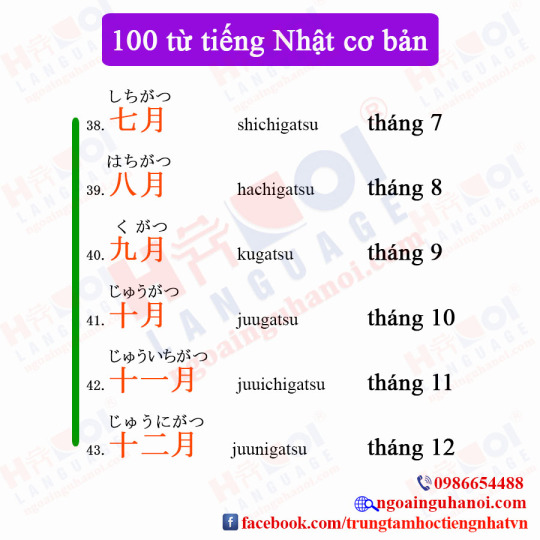


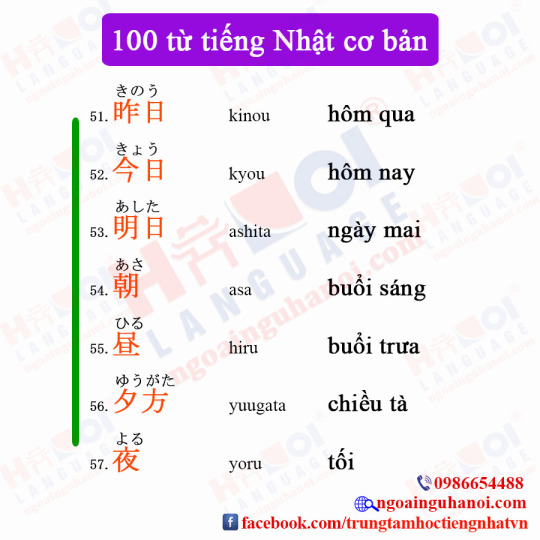






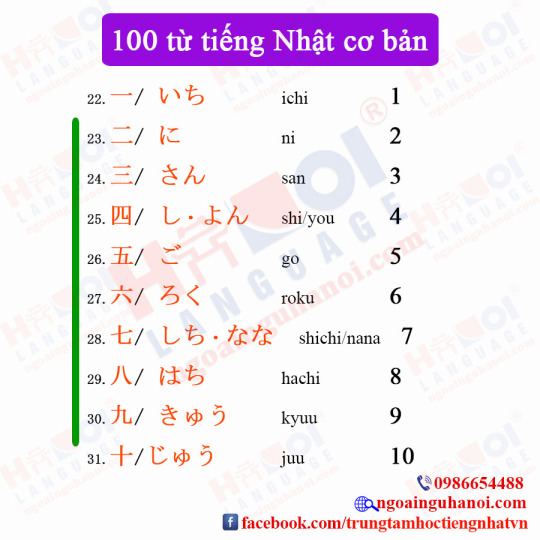


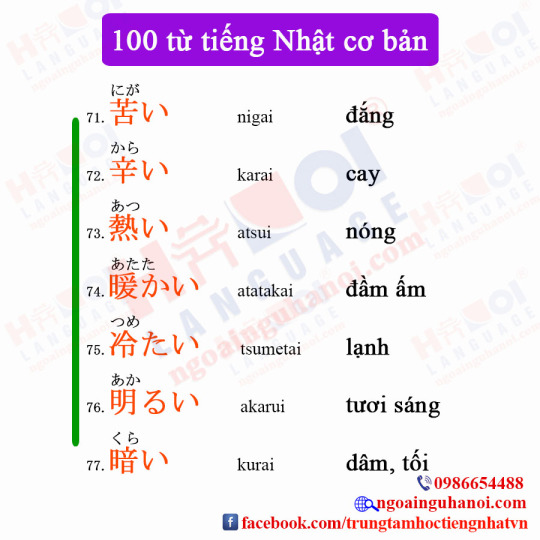


Chắc hẳn các bạn đã nắm được một phần nào đó về chủ đề mình chia sẻ hôm nay rồi, từ vựng tiếng Nhật cho người mới bắt đầu. Hãy luyện tập nhiều để nắm được những kiến thức cần thiết các bạn nhé.
Nguồn bài viết: trungtamtiengnhathn.tumblr.com
0 notes
Video
youtube
YANMAR AW7120 Harvesting rice in Taiwán
#YANMAR #AW7120 #Harvesting||rice in Taiwán
Cosechando arroz en Taiwán
Yanmar AW6120 聯合收穫機
YANMAR AW7120割稻機 割倒稻子
EL ARROZ ES EL CEREAL BÁSICO DE LA COCINA JAPONESA Y HA SIDO CULTIVADO AQUÍ POR MÁS DE 2.000 AÑOS.
A pesar de su larga historia en Japón, el arroz fue durante mucho tiempo un alimento reservado para los guerreros y la nobleza. Se convirtió en un alimento para la población en general sólo a partir del siglo XVII y en un alimento base a principios del siglo XX. Pero el poder que los japoneses le confieren a este cereal y sus múltiples usos hacen que el arroz sea un alimento fundamental de la civilización japonesa.
UN IMPUESTO A PAGAR
En el pasado, los agricultores comían mijo y cebada y cultivaban arroz para pagar impuestos a los guerreros (el kanji para "impuesto" es 税). A partir de la era Edo (1603-1868), el cultivo de arroz se expandió rápidamente y con cosechas cada vez más abundantes, los campesinos y la gente común pudo incorporar un poco de arroz en sus comidas.
ARROZ EN JAPONÉS
En japonés hay tres palabras diferentes que significa arroz. Ine稲 cuando se cultiva en los campos de arroz; o kome お米 para el arroz cosechado (el kanji 米 presente en la composición del antiguo caracter 氣, ki, la energía vital); y finalmente gohan ご飯 (o meshi) para el arroz cocido para comer. El arroz es tan importante en Japón que la palabra gohan también significa comida. Cuando está asociado a los ideogramas que significan mañana, tarde y noche (asa, hiru, ban), significa respectivamente desayuno, almuerzo y cena. El desayuno es el "arroz de la mañana" y así sucesivamente.
VARIEDADES
El arroz japonés (su nombre científico oryza sativa japonica) es una variedad de grano redondo. Se divide en dos categorías principales, Koshihikari y Sasanishiki, cultivadas en diferentes regiones de Japón. La variedad uruchi, de granos más alargados, se utiliza para el sushi. En Japón hay más de cien tipos de arroz. Tal vez puedas recordar el hitomebore pues su nombre significa "amor a primera vista" ...
PARA TODOS LOS GUSTOS
Los japoneses comen arroz blanco (hakumai) y más raramente arroz integral (genmai). El genmai es más difícil de masticar, pero tiene mayor valor nutritivo gracias a sus fibras, vitaminas y minerales. Los japoneses comen el arroz sin sal ya que éste se sirve como acompañamiento de diversos platos que ya están salados y que componen la comida tradicional (pescado o carne y sopa). Hay algunas excepciones: el arroz mezclado con verduras, por ejemplo, es el maze gohan. Cuando acompaña una carne con salsa de curry, es el muy popular kare rice, arroz al curry. Salteado con verduras y carne, el shahan, o arroz frito. Y el triángulo de arroz relleno con pescado o ciruela seca, es el onigiri, bocadillo que se come sobre la marcha.
EL ARTE DE COMER ARROZ
Hay una regla de oro: ¡ni se te ocurra ponerle salsa de soya a tu arroz en Japón! Si lo haces te mirarán con asombro. Los japoneses le sienten un sabor al arroz que a los occidentales les cuesta percibir. A la hora de comer sushi, sumerge el pescado en la salsa de soya, no el arroz. Otro error que debes evitar: enterrar los palillos verticalmente en tu tazón de arroz: este es un gesto reservado para los funerales budistas. Para no atraer la mala suerte, acuesta los palillos horizontalmente sobre el tazón.
OTROS USOS DEL ARROZ
El arroz también se utiliza para hacer vinagre (komezu), sake, mirin (alcohol para cocinar) o las galletas llamadas senbei. Además es uno de los ingredientes para preparar pasta miso, elemento esencial de la cocina japonesa. El arroz glutinoso o mochigome, se usa para hacer los mochi, unos bollitos tradicionales.
Más que simplemente un cereal, el arroz es un alimento esencial de la cocina y la cultura japonesa.
Subscribe you will help me grow
Suscríbete tú me ayudarás a crecer
https://www.youtube.com/c/TheBestMachines/featured?sub_confirmation=1
SÍGUEME EN MIS REDES SOCIALES
Instagram: https://www.instagram.com/thebestmachines1/
Twitter: https://twitter.com/TheBestMachines
Fan Page: https://www.facebook.com/AdministradorAlvaro/
FGrupo: https://www.facebook.com/groups/311033402734205/
Google+:https://plus.google.com/u/0/+TheBestMachines
Coogle + Agriculture:https://plus.google.com/u/0/collection/I2veTF
Google+ Forestry:https://plus.google.com/u/0/collection/MsweTF
Google+ Construction Industry: https://plus.google.com/u/0/collection/U3HfTF
Google+ Maquinaria de Carretera: https://plus.google.com/u/0/collection/kYloRF
Blog:https://machinesthebest.blogspot.com.uy/
-~-~~-~~~-~~-~-
Please watch: "New PRESENTATION The Best Machines 2018 2019 Full HD"
https://www.youtube.com/watch?v=ViALLSlhdRU
-~-~~-~~~-~~-~-
0 notes
Photo
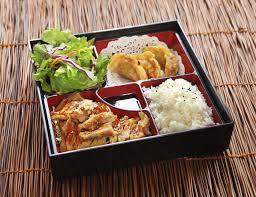
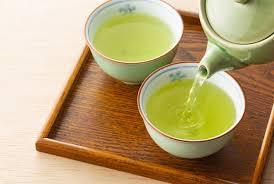
Konnnichiwa,
This is the dialogue between my friend and I in the Japanese language about food.
なに が すき ですか。
Nani ga suki desuka?
に-さん わ にく が すきです。
Nik-san wa niku ga suki desu.
も すき ですか。
Mo suki desuka?
くだもの も すき です。
Kudamono mo suki desu.
なに わ すき じゃない ですか。
Nani wa suki janai desuka?
に-さん わ やさい すき じゃない です。
Nik-san wa yasaiwa suki janai desu.
Asa gohan (あさ ごはん)
Breakfast
Hiru gohan(ひる ごはん)
Lunch
Ban gohan(ばん ごはん)
Dinner
Amari tabemasen(あまり たべません)
Seldom eat/take it
Amari nomimasen(あまり のみません)
Seldom drink/take it
Amari suki janai desu(あまり すき じゃない です)
I am not a big fan.
Arukooru wo nonde wa ikamasen(あるこおるを のんで わ いかません)
I can’t drink/take alcohol
0 notes
Text
LESSON 9 なんじに おきますか Nan-ji ni okimasuka What time do you wake up
First of all, let’s learn about the time

notes from my せんせい to all of her students
What do you do at that particular time?
a. おきます。 Okimasu. (wake up)
b. あさごはんを たべます。 Asa-gohan o tabemasu. (breakfast)
c. しんぶんを よみます。 Shinbun o yomimasu. (read newspaper)
d. べんきょうを します。 Benkyoo o shimasu. (read books)
e. かいしゃ / がっこうに いきます。 Kaisha / gakkoo ni ikimasu. (went to work/school)
f. しごとを します。 Shigoto o shimasu. (work)
g. ひるごはんを たべます。Hiru-gohan o tabemasu. (lunch)
h. ばんごはんを たべまっす。 Ban-gohan o tabemasu. (dinner)
i. シャワーを あびます。 Shawaa o abimasu. (shower)
j. ねます。 Nemasu. (sleep)
0 notes
Photo
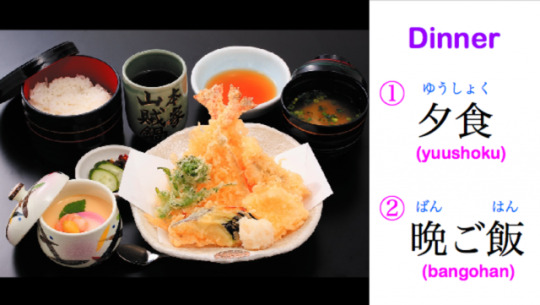
★Dinner in Japanese is 夕食 (yuushoku) or 晩ご飯 (bangohan)!
Do you know how to say breakfast and luch (◕ω◕)?
http://www.punipunijapan.com/meals-in-japanese/
#Japan#Japanese#learn japanese#online japanese lesson#kakehashi#kakehashi japan#kakehashijapan#nihongo#japanese lesson#tenpura#bangohan#yushoku#choushoku#asagohan#asa#yoru#hiru#gohan#dinner#lunch#breakfast#break fast#puni puni#puni puni japanese#japanese tutor#japanese teacher#japanese school#sensei
10 notes
·
View notes
